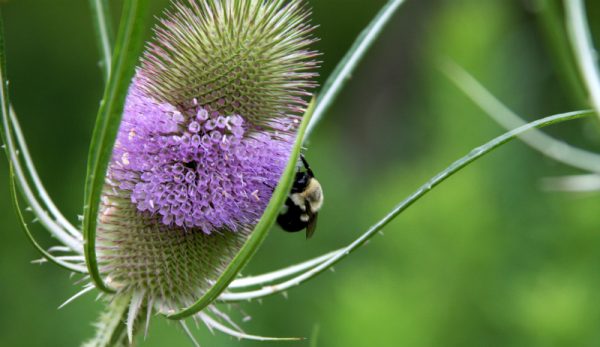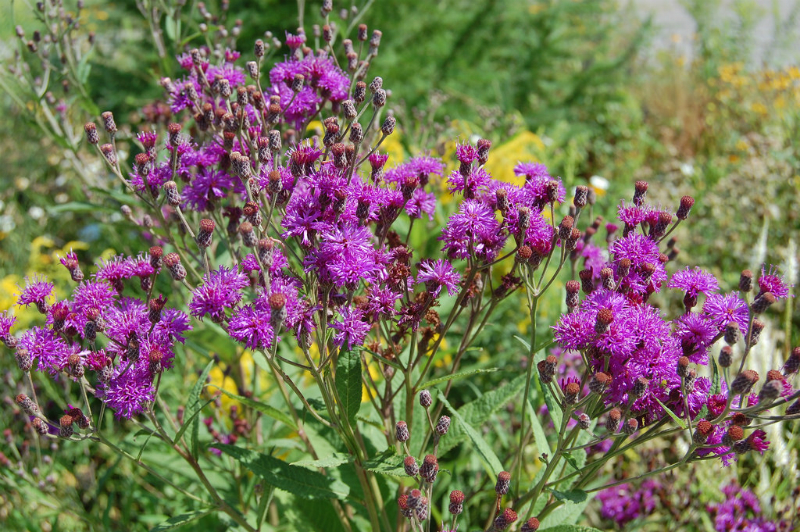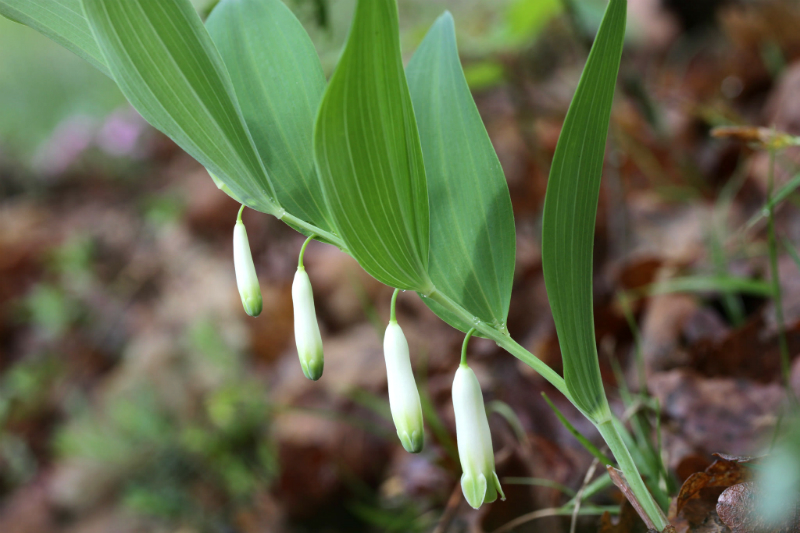
As summer winds down and a golden hue washes over the landscape, foragers and herbalists set their sights below ground. Fall is the time to harvest roots. This is the time of year that plants focus their energy downward, no longer putting effort into the leaves and flowers that will soon succumb to cold weather but instead into the roots that allow them to continue future propagation. This redistribution of energy is our clue to look to the roots as the most beneficial parts of the plant in terms of nutritional and medicinal benefits.
Fall foraging for medicinal roots can be tricky, as showy flowers don’t necessarily direct you to the harvest. As you set out on a fall hike, make sure you’re confident in your plant identification before you dig. Take along a trusty field guide or two, or harvest with an expert forager.
Here are some plants with roots you can use for medicinal purposes to look out for on your fall journey.
1. Teasel (Dipsacus fullonum)
Like many of the plants whose roots are harvested for their medicinal properties, teasel (pictured above) is a biennial, meaning it has a two-year lifespan. However, you want to harvest the root after the first frost in the plant’s first year, before the plant sends up its tall flower stalks. While the plant isn’t commonly used in western herbalism, if you consult herbal literature, you’ll find many medicinal uses for it. It has gained particular interest in areas where Lyme disease cases are increasing. Teasel is an introduced species and considered a noxious weed in several states, so harvest away.
- How to Spot It: This plant is often confused with a thistle thanks to its spiky flower placed upon a spiny stalk that can reach as high as 6 feet. In the spring, the flowerhead grows a white- to lilac-colored ring making it look somewhat planet-like, but in the fall what’s left is a brown seedhead that adds nice interest to a dried bouquet. When harvesting roots, look for the first-year basal rosettes. The lance-shaped leaves are wrinkly, often with perforations.
- Where to Find It: Fields, roadsides and riverbanks throughout most of the U.S. and Canada
- How to Use It: Teasel can be used as a joint remedy and kidney remedy, as well as to treat chronic muscle inflammation and arthritis. Herbalists are also beginning to find it is a powerful treatment for Lyme disease. Dry the roots to use as a decoction, or tincture them in vodka.
2. Ironweed (Vernonia spp.)

Ironweed is a beautiful native perennial whose purple blossoms stand in striking contrast to the golden hues of fall. Harvest its medicinal roots after the first frost, once flower heads turn brown.
- How to Spot It: The bright purple clusters of ironweed flowers spring out atop tall stems (6 to 9 feet tall depending on the species) in July through October. The leaves, dark green and lance shaped, are narrow and come to sharp points.
- Where to Find It: Fields, roadsides, woods and riverbanks throughout most of the U.S.
- How to Use It: Native Americans used ironweed to regulate the menstrual cycle and relieve pain after childbirth as well as treat other issues of the the female reproductive system. It was also used to reduce fevers and stomachaches. Dry its roots for a decoction, or tincture them in alcohol.
3. Goldenrod (Solidago canadensis)

There are more than 100 species of goldenrod across the U.S. The most common species sought for medicinal purposes is Solidago canadensis, though the roots of other species can be substituted. Contrary to popular belief, goldenrod is probably not the cause of your hay fever. While the flowers and leaves are most commonly collected in fall, its root shouldn’t be overlooked during this time either.
- How to Spot It: Goldenrod’s signature golden triangular panicle blossoms begin sweeping across the landscape between July and September. The leaves are lance shaped and toothed, and the stems are hairy at the top and smooth at the base.
- Where to Find It: Fields and roadsides throughout the U.S. and Canada
- How to Use It: Use root for burns and to stimulate the kidneys when treating urinary tract infections, such as cystitis and nephritis. Dry the roots for a decoction, or tincture them in alcohol.
4. Valerian (Valeriana sitchensis)

Valerian is a well known and powerful sedative. While the European variety, Valariana officinalis, is most commonly used and discussed in herbal literature, there is a native variety, Valeriana sitchensis, that can also be used and is purported to have even stronger medicinal action. That’s the variety we’ll talk about here. The roots of the first-year plant should be harvested for medicinal use in fall, after the first frost of the season.
- How to Spot It: Valerian grows 4 to 5 feet tall. Its pale pink to white flowers form tight clusters, and its leaves are strongly divided leaves, the lower ones being toothed.
- Where to Find It: Wetland areas along the western coast of the U.S. and Canada
- How to Use It: Valerian root can be dried for use in a decoction, dried and ground for capsules or tinctured in alcohol. It’s best known for its sedative and antispasmodic properties. Studies show that as a sleep aid, it’s more effective when used long-term rather than as a single dose. It can calm the mind and treat physical symptoms of anxiety, including lowering blood pressure. It also can serve as a muscle relaxant in various areas of the body, including neck and shoulder tension, irritable bowel syndrome, colic and menstrual cramping. Use caution if using valerian for the first time, as in some instances, it can work as a stimulant instead of a sedative. In fact, cats find it more stimulating than catnip.
5. Solomon’s Seal (Polygonatum spp.)

Solomon’s seal is a plant in the lily family that grows through a network of rhizomes. It’s a rare woodland plant, most often seen in ornamental gardens. The plant will spread, albeit slowly, so be judicious when harvesting. Harvest the rhizomes after the berries drop in fall.
- How to Spot It: Solomon’s seal plants stand about 20 inches tall. Flowers turn to berries in the fall and hang under the plants’ arching stem. Oval leaves alternate down the stem.
- Where to Find It: Woodland areas throughout the U.S. and Canada
- How to Use It: Tincture the rhizome in high-proof alcohol, infuse into an oil, or chop it up fresh or dried for a poultice. You can use it externally to strengthen bones and tendons and heal cuts and bruises. In traditional Chinese medicine, it is used to treat sore throats; dry, irritable coughs; and chest congestion. It also eases intestinal upset and tones the male and female reproductive systems.




